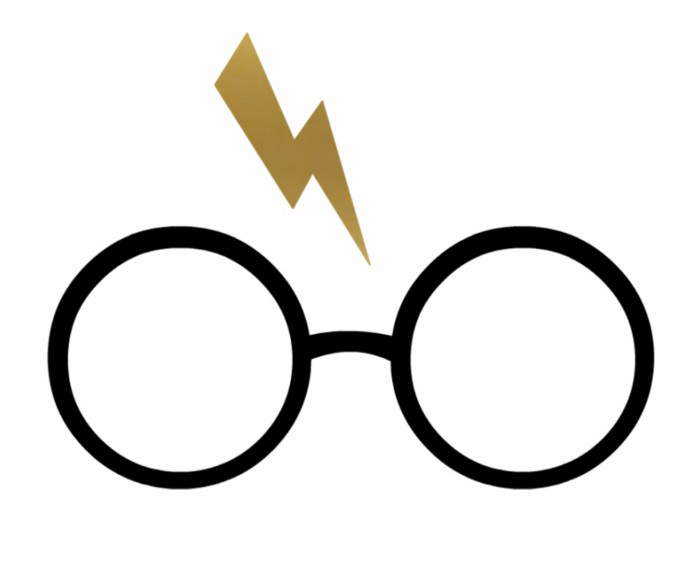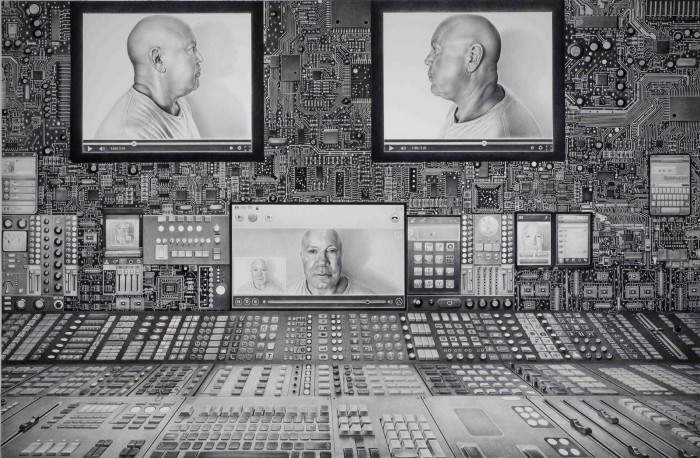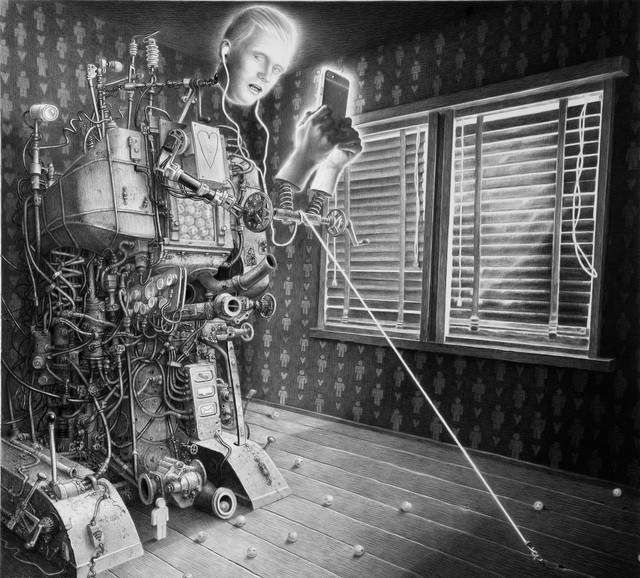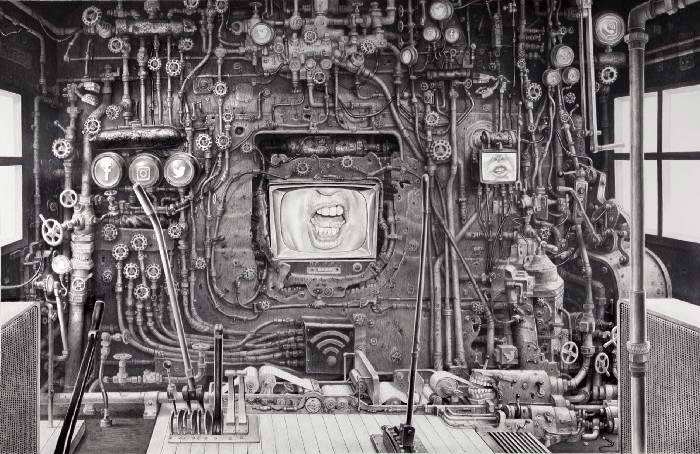With this article I am going to get straight to the point. What really matters today, even more than before, is not digital. I think what will matter most is the careful choice of engagement tools that each museum will best use to communicate its ethos, its ideals, its experiences. I chose to say this in spite of the growing misconception that leads museums to think that their relevance is guaranteed simply by digitizing content.
Digital has indeed become the hammer that, no doubt, every toolbox should have: it is a tool that is certainly necessary and essential. But since the hammer is not the tool that is needed to solve all problems, the same is true of digital. A recent article by Becky Frankiewicz and Tomas Chamarro-Premuzic fixes this concept well: digital transformation is about talent, not technology. Digital may be perceived as the magic wand that museums need right now, but the wand, in order to work, needs a Harry Potter.
 |
Incidentally, Harry Potter is a good example to describe the idea of the toolbox. The backbone of the Harry Potter universe is an amalgam of seven books followed by eight films produced in rapid succession. Around this hinge revolves a universe that is still a place to be discovered and that continues far beyond the books and the films. In addition to wizardworld.com, which replaced Pottermore as of October 2019, the Harry Potter universe also includes action figures, Lego games, the Wizarding World of Harry Potter amusement park at Universal Studios, video games, The Daily Prophet online newspaper, social groups, merchandise, and more.
The Harry Potter universe is a complex ecosystem that does not depend on any one medium, although the pivot is always the set of books and movies. The success of the Harry Potter universe, on the contrary, comes from understanding that it is not finite and contained, but open to development, capable of evolving and transforming as it encounters new mediums.
Making a comparison, the Covid-19 pandemic led museums to focus solely and predominantly (albeit due to force majeure and circumstances)on one medium. Digital is a key asset , but the post-Covid museum toolbox requires much, much more than digital. I know of only a few exceptions that have worked on other media: the LAM Museum in Amsterdam and the Polin Museum in Warsaw are the two best practices I point out.
Let’s try to think, for a second, that the idea of the museum does not correspond to the physical space that welcomes visitors during set hours according to a predetermined pattern. Instead, let us think of a museum that has a multiplicity of identities, of which the physical one may not even be the strongest. One of the museums that comes closest to this way of thinking is Orhan Pamuk’s Museum of Innocence. In this case, we are discussing a project that was deliberately conceived and incubated in fiction, and only later became a content space or what we might describe as a physical museum. Since the writer studies transmedia thinking and how it can be applied to museological practice, I can understand very well Orhan Pamuk’s insistence that the physical space and the book are separate. Both, however, belong to the world of the Museum of Innocence, which thus has greater potential to expand and create engagement through new media.
This way of thinking is influenced by what Henry Jenkins calls "convergent culture." You can learn more about it by reading his book Convergence Culture: where old and new media collide. I found a good definition of it at this link.
 |
| Laurie Lipton, Interface (2014; charcoal and pencil s paper), from the series Post Truth |
What is convergent culture?
The success of the Harry Potter universe coincides with the advent of what is generally described as “convergent culture.” For those unfamiliar with this theory, convergent culture refers to how media consumers understand and make use of new and traditional forms of mediaand content. In other words, convergent culture concerns the ways and means by which content flows and is distributed through mediaand, as the example of the Harry Potter universe makes clear, the use of new mediato engage withold media content.
The more I discuss with colleagues across Europe and beyond, the more I see the potential for this theory to shape, empower, and model new museum institutions and experiences. For the purposes of this article, I would choose to focus on two aspects of convergent culture: media convergence and social or organic convergence.
Media convergence is usually understood as the combination of old and new media within a single work. Sooner or later all mass media converge to a point where they become a single medium, and this is because of the advent of new technologies. We now look at the museum as a single work, as a kind of book that tells us only one aspect or story of the experience it is meant to convey. The big mistake that Ithink is being made these days, and which lies at the root of the flop of the virtual tours that began in mid-March, is the complete transposition of the physical dimension into the virtual one, rather than the reinvention of a new museum in the virtual, capable of offering its own contribution to the museum world. That world, moreover, could also be accessible with a ticket.
 |
| Laurie Lipton, Alone in a Room, Socialising (2018; charcoal and pencil s paper), from the series Techno Rococo |
Instead, social or organic convergence is generally understood as the simultaneous and multiple use of different technological mediums, for example, listening to music while watching TV or playing video games. We consider here the perspective of the museum experience as seen by the end user through the lens of this multiple use of technological media. In regards to the museum experience, we may think rather superficially about the use of an app or traditional audio guide during a visit. This belief is influenced by our idea of the museum as a predominantly and primarily physical space, but one that is also accessible digitally. We should think of the museum as a place that has more than one medium or format, after which the multiplicity of access points would have the potential to provide different experiences, each capable of integrating with the other and initiating healthy overlaps. The museum may well be a book of stories or a poster of stories, or even a digital story or a Youtube story, but each story should be designed with the strengths of each medium in mind. It might mean seeing a work of art while listening to a personalized story-and much more!
Museums need these lenses now more than ever. It would be nice for museums to use something like Harry Potter glasses, though not necessarily identical: museums need lenses through which to see things differently, dissect challenges by going deep and rebuilding, transforming and regenerating. The solutions may not be as radical or future-oriented as those discussed here: we know that change requires adaptations, and a change of culture may not be as easy to introduce.
 |
| Laurie Lipton, Mouthpiece (2017; charcoal and pencil s paper), from the series Post Truth |
These wonderful works in charcoal and pencil on paper are by New York-based artist Laurie Lipton. We thank Laurie for agreeing to include her works in this article.
The original version of this article was published in The Humanist Museum.
Warning: the translation into English of the original Italian article was created using automatic tools. We undertake to review all articles, but we do not guarantee the total absence of inaccuracies in the translation due to the program. You can find the original by clicking on the ITA button. If you find any mistake,please contact us.